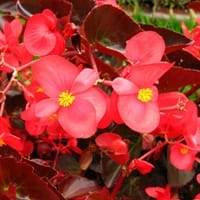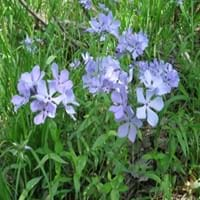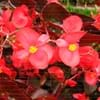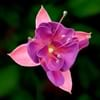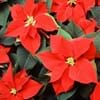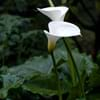Life Span
Perennial
Perennial
Type
Tender Perennial
Flowering Plants
Origin
Hybrid origin
Northeastern United States, Mid-Atlantic United States, Southeastern United States, Central United States, Texas, Canada
Types
'Bellagio Apricot' begonia, 'Bellagio Blush' begonia, 'Bellagio Pink' begonia
Blue Moon, Clouds of Perfume
Habitat
Subtropical climates, Tropical regions
Rich Woods
USDA Hardiness Zone
9-15
4-8
Sunset Zone
H1, H2, 14, 15, 16, 17, 18, 19, 20, 21, 22, 23, 24
1a, 1b, 2a, 2b, 3a, 3b, 4, 5, 6, 7, 8, 9, 10, 11, 12, 13, 14, 15, 16, 17
Habit
Upright/Erect
Mat-forming
Flower Color
Pink, Salmon
Blue Violet
Flower Color Modifier
Not Available
Bicolor
Fruit Color
Tan
Not Available
Leaf Color in Spring
Red, Green
Green
Leaf Color in Summer
Red, Green, Dark Green, Bronze
Green
Leaf Color in Fall
Red, Dark Green, Bronze
Green
Leaf Color in Winter
Green
Not Available
Leaf Shape
Heart-shaped
Ovate-lanceolate
Plant Season
Spring, Summer, Fall, Winter
Spring
Sunlight
Partial Sun, Partial shade
Partial Sun, Partial shade
Type of Soil
Loam, Sand
Loam
The pH of Soil
Acidic, Neutral
Neutral
Soil Drainage
Well drained
Well drained
Bloom Time
Indeterminate
Spring
Tolerances
Not Available
Not Available
Where to Plant?
Container, Ground, Pot
Container
How to Plant?
Seedlings, Transplanting
Cuttings, Seedlings
Plant Maintenance
Medium
Medium
Watering Requirements
Over-watering can cause leaf problems or root diseases, Requires regular watering, Water Deeply
Requires regular watering
In Summer
Lots of watering
Lots of watering
In Spring
Moderate
Moderate
In Winter
Average Water
Average Water
Soil pH
Acidic, Neutral
Neutral
Soil Type
Loam, Sand
Loam
Soil Drainage Capacity
Well drained
Well drained
Sun Exposure
Partial Sun, Partial shade
Partial Sun, Partial shade
Pruning
Cut or pinch the stems, No pruning needed in the early stages, Prune if you want to improve plant shape, Prune to control growth, Remove dead or diseased plant parts
Remove dead flowers
Fertilizers
All-Purpose Liquid Fertilizer
Apply 10-10-10 amount
Pests and Diseases
Aphids, Bacterial leaf spot, Botrytis Blight, Foliar nematode, Powdery mildew, Pythium rot, Rhizoctonia crown rot
Leaf spot, Powdery mildew, Rust
Plant Tolerance
Drought
Drought
Flower Petal Number
Single
Single
Foliage Texture
Medium
Medium
Foliage Sheen
Glossy
Matte
Attracts
Not Available
Hummingbirds, Butterflies
Allergy
Asthma
Mild Allergen
Aesthetic Uses
Beautification
Ground Cover
Beauty Benefits
Not Available
Not Available
Environmental Uses
Air purification
Air purification
Medicinal Uses
Bronchitis, Candidiasis, Cold, Digestive disorders, Dysentry, Haemoptysis, Liver problems, Menstrual Disorders, Scrofula, Swelling
Boils, Eczema, Intestinal disorders
Part of Plant Used
Whole plant
Flowers, Leaves, Root
Other Uses
Used as Ornamental plant
As a tea substitute, Used as eyewash
Used As Indoor Plant
Yes
No
Used As Outdoor Plant
Yes
Yes
Garden Design
Container, Edging, Houseplant, Mixed Border, Tropical
Mixed Border, Rock Garden / Wall, Wildflower
Botanical Name
BEGONIA 'Richmondensis'
PHLOX divaricata 'Blue Moon'
Common Name
Begonia, Richmond Begonia
Wild Blue Phlox, Woodland Phlox
In Hindi
बिगोनिया
Wild Blue Phlox
In German
Begonie
Wild Blue Phlox
In French
Begonia
Wild Blue Phlox
In Spanish
Begonia
Wild Blue Phlox
In Greek
μπιγκόνια
Άγρια μπλε Phlox
In Portuguese
Begônia
Wild Blue Phlox
In Polish
Begonia
Dziki Niebieski Phlox
In Latin
Begonia
Phlox ferae blue
Phylum
Magnoliophyta
Magnoliophyta
Class
Magnoliopsida
Magnoliopsida
Order
Cucurbitales
Solanales
Family
Begoniaceae
Polemoniaceae
Clade
Angiosperms, Eudicots, Rosids
Angiosperms, Asterids, Eudicots
Tribe
Not Available
Phlocideae
Subfamily
Not Available
Polemonioideae
Season and Care of Begonia and Wild Blue Phlox
Season and care of Begonia and Wild Blue Phlox is important to know. While considering everything about Begonia and Wild Blue Phlox Care, growing season is an essential factor. Begonia season is Spring, Summer, Fall and Winter and Wild Blue Phlox season is Spring, Summer, Fall and Winter. The type of soil for Begonia is Loam, Sand and for Wild Blue Phlox is Loam while the PH of soil for Begonia is Acidic, Neutral and for Wild Blue Phlox is Neutral.
Begonia and Wild Blue Phlox Physical Information
Begonia and Wild Blue Phlox physical information is very important for comparison. Begonia height is 30.50 cm and width 30.50 cm whereas Wild Blue Phlox height is 30.50 cm and width 30.50 cm. The color specification of Begonia and Wild Blue Phlox are as follows:
Begonia flower color: Pink and Salmon
Begonia leaf color: Red and Green
Wild Blue Phlox flower color: Blue Violet
- Wild Blue Phlox leaf color: Green
Care of Begonia and Wild Blue Phlox
Care of Begonia and Wild Blue Phlox include pruning, fertilizers, watering etc. Begonia pruning is done Cut or pinch the stems, No pruning needed in the early stages, Prune if you want to improve plant shape, Prune to control growth and Remove dead or diseased plant parts and Wild Blue Phlox pruning is done Remove dead flowers. In summer Begonia needs Lots of watering and in winter, it needs Average Water. Whereas, in summer Wild Blue Phlox needs Lots of watering and in winter, it needs Average Water.
